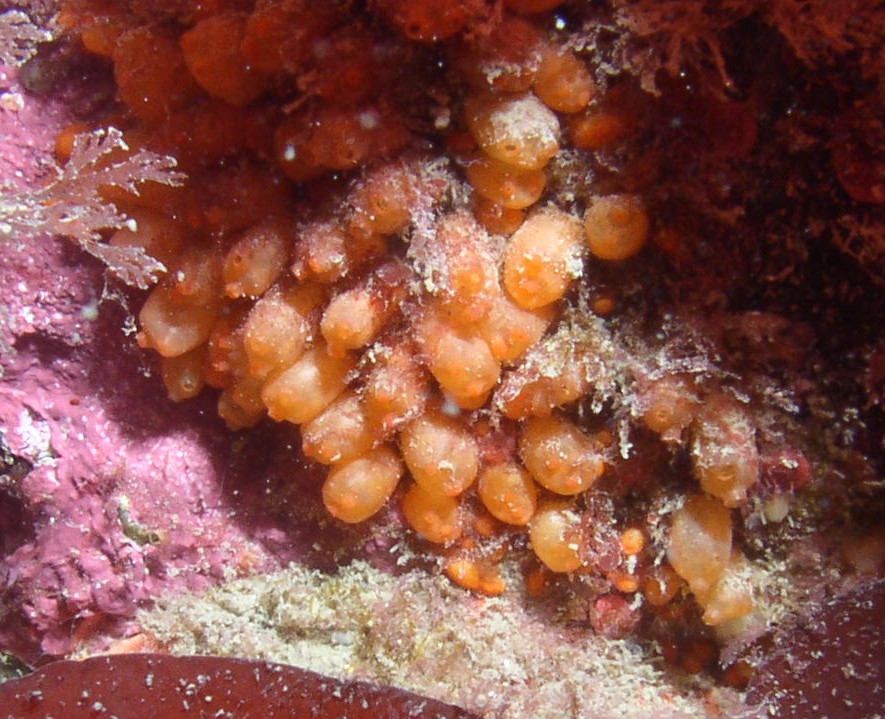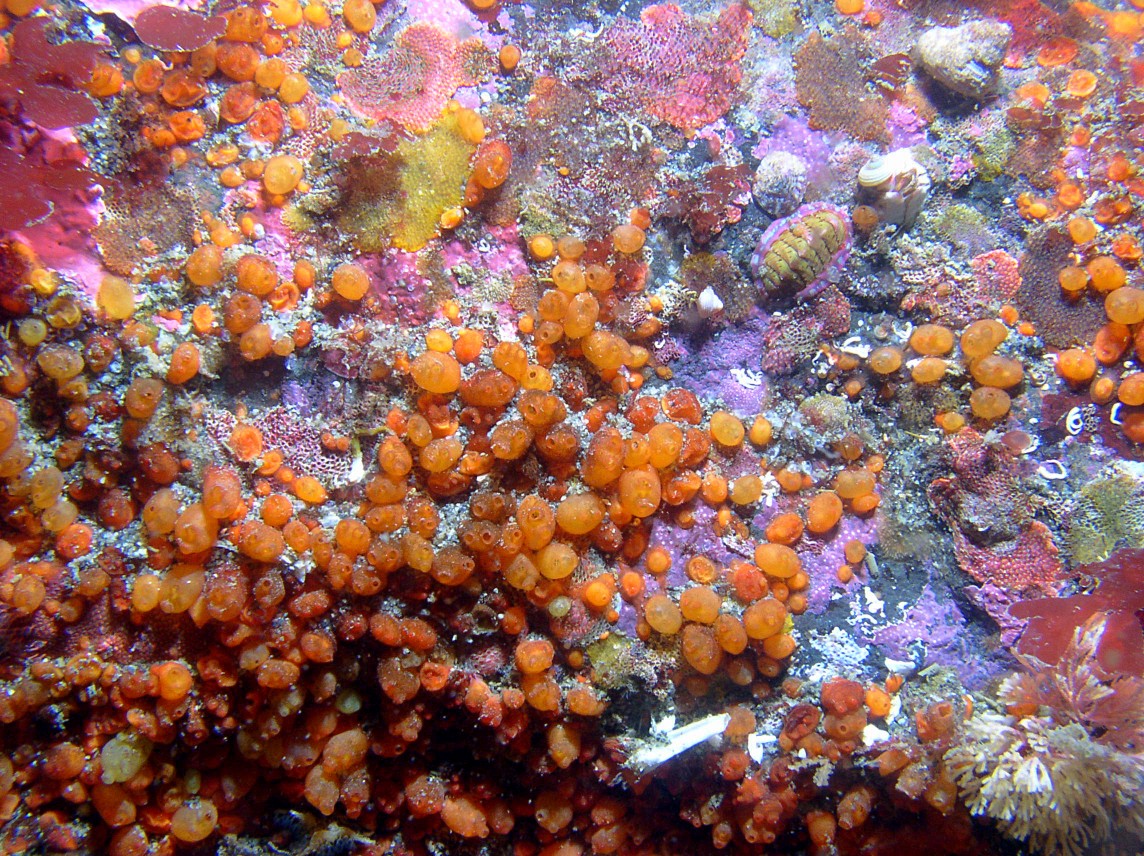How to Distinguish from Similar Species: Metandrocarpa dura has much more obvious connections between individuals and generally live in more massive aggregations. They usually live on kelp but may also be found on rocks. Cnemidocarpa finmarkiensis is solitary and has a smooth, shiny tunic. Distaplia occidentalis is a true colonial form with many individuals within the same tunic.
Geographical Range: Southeast Alaska to San Diego, CA
Depth Range: Intertidal or subtidal to about 20 m
Habitat: Sides and undersurfaces of rocks in areas of strong current.. They may be especially common on granite substrates.
Biology/Natural
History:
This species
routinely reproduces asexually. Runners extend from the base
of adults,
then grow up into a new individual. Young colonies have
widely spaced
individuals but in older colonies the individuals are often more
tightly
packed together. During budding of new individuals, the
entire individual
is formed from ectodermal tissue instead of from endoderm, mesoderm,
and
ectoderm as occurs in the larva. Many of these connections
later
break. In Washington both asexual and sexual reproduction
occur year-round
but probably most commonly in the spring and summer. The
tadpole
larvae are brooded in the atrial cavity, then released in the
morning.
They settle and metamorphose into adults after swimming for 2-48 hours,
and are ready to feed within about 11 days.
| Return to: | |||
| Main Page | Alphabetic Index | Systematic Index | Glossary |
References:
Dichotomous Keys:Kozloff 1987, 1996
Smith and Carlton, 1975
General References:
Gotshall,
1994
Harbo,
1999
Kozloff,
1993
Morris et al., 1980
O'Clair
and O'Clair, 1998
Ricketts
et al., 1985
Scientific Articles:
Abbott,
D.P., 1953. Asexual
reproduction in the colonial ascidian Metandrocarpa
taylori Huntsman. Univ. Calif. Publ. Zool. 61:
1-78
Haven, N.D.,
1971. Temporal patterns of
sexual and asexual reproduction in the colonial ascidian Metandrocarpa
taylori Huntsman. Biological Bulletin 140:
400-415
Watanabe, H. and C.C.
Lambert, 1973. Larva
release in response to light by the compound ascidians Distaplia
occidentalis and Metandrocarpa
taylori. Biological Bulletin 144: 556-566
Watanabe, H. and A.T. Newbarry, 1976. Budding by oozooids in the polystyelid ascidian Metandrocarpa taylori. Ann. Soc. Roy. Zool. Belg., Sci. (2)16: 1-59
Zeng, Liyun, Molly W. Jacobs, and Bill J. Swalla, 2006. Coloniality has evolved once on Stolidobranch ascidians. Integrative and Comparative Biology 46:3 pp 255-268
Web sites:
General Notes and
Observations: Locations,
abundances, unusual behaviors:

A closeup view of another colony. Photo by
Kirt
Onthank, July
2007
Authors and Editors of Page:
Dave Cowles (2007): Created original page
CSS coding for page developed by Jonathan Cowles (2007)
